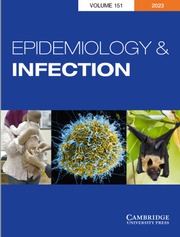Article contents
Acute Infection of the Urinary Tract Due to a Special Group of Haemolytic Bacilli
Published online by Cambridge University Press: 15 May 2009
Extract
In a paper on Bacillus coli infections of the urinary tract, Dudgeon, Wordley and Bawtree (1922) refer to two cases of acute pyelo-cystitis, one of which terminated fatally, due to slow lactose fermenting bacilli which were strongly haemolytic. The diagnosis of paratyphoid fever was considered probable on clinical evidence, chiefly because of the severity of the illness and the prolonged pyrexia which was infinitely longer than occurs in typical cases of acute coli fever. An organism was isolated from each case with identical cultural, serological, and haemolytic properties. On cultural evidence both strains were distinct from true colon bacilli, as they formed blue colonies on litmus-lactose-agar which were similar in appearance to typhoid-paratyphoid colonies, and slowly fermented lactose-broth.
- Type
- Research Article
- Information
- Copyright
- Copyright © Cambridge University Press 1924
References
page 348 note 1 Dudgeon, L. S., Wordley, E., Bawtree, F. (7. xii. 1922). On Bacillus coli infection of the urinary tract especially in relation to haemolytic organisms. Journ. Hygiene, xxi. 168. (2nd communication.)CrossRefGoogle Scholar
page 353 note 1 All these results are expressed as end point reaction which is the limit of agglutination as ascertained with a hand lens. The lowest limit employed was 1 in 400
- 12
- Cited by


